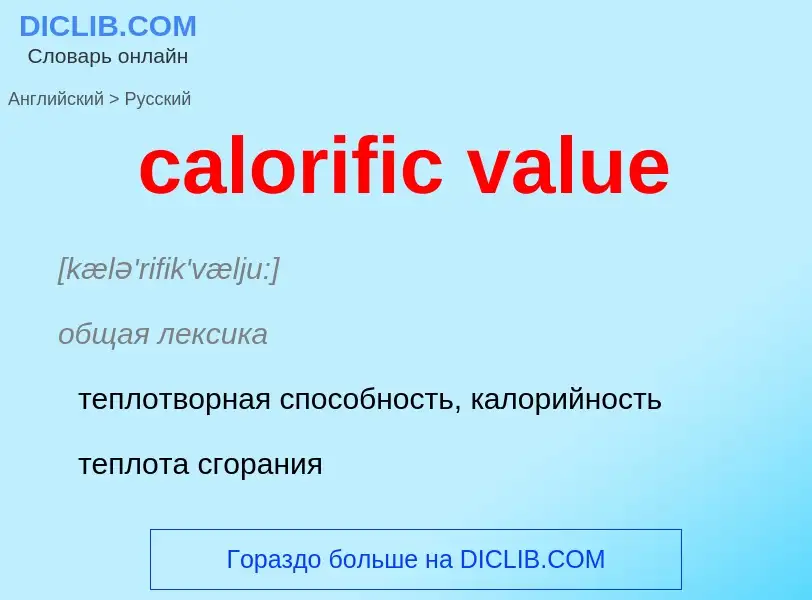Translation and analysis of words by ChatGPT artificial intelligence
On this page you can get a detailed analysis of a word or phrase, produced by the best artificial intelligence technology to date:
- how the word is used
- frequency of use
- it is used more often in oral or written speech
- word translation options
- usage examples (several phrases with translation)
- etymology
calorific value - translation to russian
[kælə'rifik'vælju:]
общая лексика
теплотворная способность, калорийность
теплота сгорания
специальный термин
теплотворная способность
теплотворность
калорийность
Definition
Wikipedia
The heating value (or energy value or calorific value) of a substance, usually a fuel or food (see food energy), is the amount of heat released during the combustion of a specified amount of it.
The calorific value is the total energy released as heat when a substance undergoes complete combustion with oxygen under standard conditions. The chemical reaction is typically a hydrocarbon or other organic molecule reacting with oxygen to form carbon dioxide and water and release heat. It may be expressed with the quantities:
- energy/mole of fuel
- energy/mass of fuel
- energy/volume of the fuel
There are two kinds of enthalpy of combustion, called high(er) and low(er) heat(ing) value, depending on how much the products are allowed to cool and whether compounds like H
2O are allowed to condense.
The high heat values are conventionally measured with a bomb calorimeter. Low heat values are calculated from high heat value test data. They may also be calculated as the difference between the heat of formation ΔH⦵
f of the products and reactants (though this approach is somewhat artificial since most heats of formation are typically calculated from measured heats of combustion).
By convention, the (higher) heat of combustion is defined to be the heat released for the complete combustion of a compound in its standard state to form stable products in their standard states: hydrogen is converted to water (in its liquid state), carbon is converted to carbon dioxide gas, and nitrogen is converted to nitrogen gas. That is, the heat of combustion, ΔH°comb, is the heat of reaction of the following process:
- C
cH
hN
nO
o (std.) + (c + h⁄4 - o⁄2) O
2 (g) → cCO
2 (g) + h⁄2H
2O (l) + n⁄2N
2 (g)
Chlorine and sulfur are not quite standardized; they are usually assumed to convert to hydrogen chloride gas and SO
2 or SO
3 gas, respectively, or to dilute aqueous hydrochloric and sulfuric acids, respectively, when the combustion is conducted in a bomb calorimeter containing some quantity of water.

